Mobile App Monetization Models for Startup
App monetization means how a firm may earn profit via their mobile app by using their user base. This article will equip you with knowledge about the newest app monetization tactics if you’re seeking to generate profits from your app for the first time or want to maximize the profits of an established and recognized app. In this post, we’ll go over what an app monetization technique is, how to choose one, and what to think about when doing so.
App monetization strategies: What is it?
A monetization strategy is a means of earning money from a certain platform, audience, or type of content.
This method incorporates a variety of tactics. Certain app categories are more suited to certain monetization strategies than others. Some applications concentrate on a single area of app monetization, while others cover a wide range of topics.
Why is a monetization strategy important?
Everyone thinks a company’s success is determined by how well it organizes customer engagement. It takes time to develop products and services that are tailored to customers’ demands while still meeting business objectives.
The creation of an app is merely the first stage towards a product’s launch. Without a good mobile app monetization plan, it’s not enough. The monetization plan outlines how the firm will earn from the value it provides to its consumers through the app.
App monetization is critical since it is becoming increasingly usual to locate apps that are free to download. Increased income is the most important advantage of a monetization plan. Many developers are unable to survive only on grants and contributions.
This is when your monetization plan comes into play. Setting aside time to create one that achieves these outcomes is critical:
- Your app is bringing in more money.
- You keep your users’ confidence and provide a good user experience.
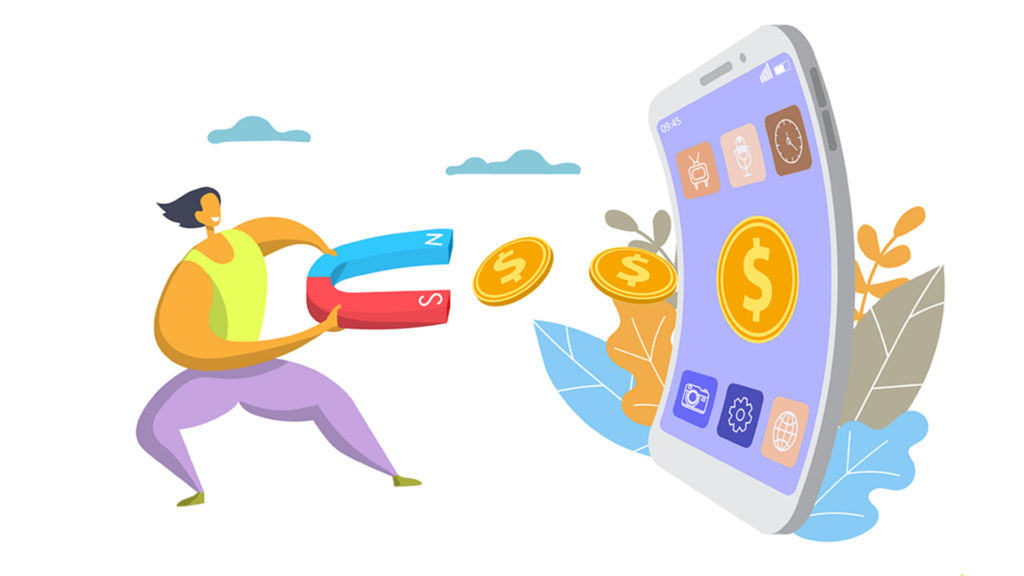
Application monetization: Principles
Customer needs and the company’s capacity to foresee quickly changing market expectations influence the efficiency of a monetization plan. When it comes to app creation, the team should think about a lot of factors. Product managers must balance satisfying business objectives (such as revenue targets) without frustrating the customers.
It’s not the same as it used to be when it comes to monetization. Cashing out on your app is a tremendous business opportunity, but if done incorrectly, it may be difficult.
It’s vital to keep in mind that earning money is merely one of the monetization plan’s goals. Rather than just thinking about the profits, the teams must study the issue on a deeper experiential level.
The goal of the monetization plan should be to provide the greatest possible consumer experience. As a result, it will strengthen ties and boost user loyalty. Companies must put forward a lot of effort to provide true worth to their consumers.
When coming up with ideas on how to commercialize your product, there are a few basic tenets to keep in mind:
- Enhance the overall usability and support: It’s no secret that how you handle customers has an impact on the overall perception of your product or service. Building seamless, engaging, and meaningful experiences are always at the forefront of a successful smartphone app commercialization plan. Clients will commit a transaction if they are happy with the entire experience with your application.
- Augment the customer experience: Excellent salesmen will recognize that the fine balance between meeting quarterly objectives and creating an app that consumers would still love to use is integral for long-term profits. Before committing to a monetization plan, try it out on a few consumers and see how well it affects the overall experience. To examine the effectiveness, use both NPS and qualitative comments. Consider alternate monetization techniques if there is criticism.
- Boost user engagement: Building a commercialization plan without encouraging consumer engagement is unrealistic. It is difficult to entice users to revisit your application regularly, although it is possible if you provide them with something worthwhile and unique.

- Consider the bigger picture: It’s tempting to focus on short-term transactions and earnings objectives to be successful, but effective monetization strategies require you to consider the big picture. Accepting the money and continuing to expand your app is a good idea if you’re offered the chance to commercialize a section of it in exchange for funding. However, keep in mind that your decisions may have a protracted impact on your critical product KPIs.
- Be innovative: It’s possible that monetizing your service will be a stimulating and ingenious endeavor. Forget the adage that an app’s only source of revenue is advertisements. There is a slew of new and innovative ways to monetize your app.
- Implement the following personalized strategies: Customer-driven approaches make it easier for your audience to interact. Furthermore, creating a mobile app is equivalent to creating a direct advertising channel. Excellent app monetization models cater to a highly personalized user experience and provide relevant offers.
Monetizing your app: Where to start?
You must be ready to explain some concerns about your app before actually deciding on a monetization technique.
Here’s a list of possible inquiries:
- What distinguishes your product from others?
- What is the size of your potential target market?
- What will your app’s target demographic do with it?
- Are you confident that consumers would be inclined to purchase to use it? If so, what will it cost?
- What are your rivals’ monetization techniques? Do they find these strategies to be effective?
- Is it more important for you to procure a great number of users or to generate income faster?
Once you’ve figured out the answer to these queries, you can start planning an approach that aligns with your company’s objectives.
App Monetization Model: Definition, Examples, Pros, and Cons
Because there are multiple options, it’s important to think about each one meticulously. The thing is, depending on the technique you choose, the app will require additional features. It will be harder to complete this subsequently if you do not complete it on time.
Your selection must be based on your understanding of your app and target market, which will enable you to prioritize them and possibly consider a hybrid approach.
In-app advertising
As aforementioned, this is by far the most successful mobile marketing strategy. In-app marketing accounts for 63 percent of all developers’ income, as per AdColony. In-app ads enable programmers to monetize their apps by placing advertisements. The app is still available for free download thanks to these advertisements. This technique also gives the ability to gather valuable information that will help you advertise more effectively and increase engagement among users. When it comes to in-app ads, as with any other monetization model for mobile apps, the user experience is crucial. Ads in apps don’t have to be disturbing or aggressive; when they’re well-targeted and deliver the best offers to the right people, they can benefit both advertising agencies and consumers.

Various ad templates are often found in mobile apps. Here are a few of the most notable:
- Tiny ads that show up in designated areas on phone screens are known as banner ads.
- Interstitial Ads: Advertisements that take up the entire screen of the user. They come in a variety of formats, including video interstitial advertisements, playable ads, and stationary ads.
- Incentivised Video Ads: Consumers would earn rewards from an application as compensation for watching a video commercial.
- Native Ads are a type of ad that is intended to mix in with the design aesthetic of an application. As a result, this ad type has little impact on the overall user experience.
For example:
Instagram managed to bring in a truly astonishing $20 billion in worldwide advertising revenue in 2019 thanks to over two million businesses using Instagram ads and paid promotion to reach the right audience.
| Advantages | Disadvantages |
| The app monetization process is simple and quick to integrate. | Can affect the app’s experience, but will generate significant income only if the app’s audience is large. |
| It doesn’t necessitate a lot of upkeep. | Ads that appear frequently can harm the user’s experience. |
| Adverts can be customized to the interests of the consumer. | Irrelevant or unattractive advertisements have an impact on the user’s experience. |
| The application is still free of charge. | It can take a long time to customize the kinds of ads that appear in your app. |
In-App Purchases
Apps are also free to download and use thanks to the in-app purchase (IAP) approach. However, rather than leveraging on all users, the emphasis is on prospective buyers. Users can purchase content, services, or features in IAP-based apps. The overwhelming majority of these people will never use the app to make a purchase.
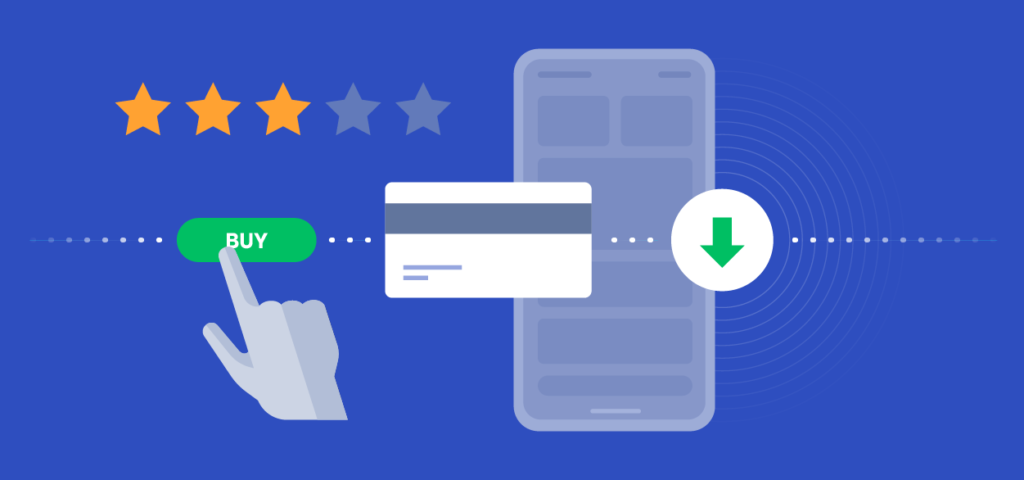
It is a strategy that has recently gained popularity among mobile games. Apps earn profits by allowing users to purchase virtual or physical commodities in the app.
| Advantages | Disadvantages |
| It is freely available to all consumers. | The income is determined by the number of paying users. |
| You wouldn’t have to show advertisements to make money. | IAPs can result in negative feedback if they are not executed properly. |
| This method is simple to incorporate, making it simple to assess your market. | Your income is now limited, and the only way to increase it is to acquire additional users. |
| Users can purchase additional functionality if they desire. | A one-time payout is exactly what it sounds like, users only have to purchase all the features once. |
Paid Apps
Are you confident that your app is a good investment for someone? If this is the case, paid apps, the oldest app monetization strategy on this list, can be used. They’re also known as a premium or pay-to-download apps. Before downloading a paid app, clients must pay a one-time fee. They’ll get permanent access to those apps’ functionalities after they’ve paid.
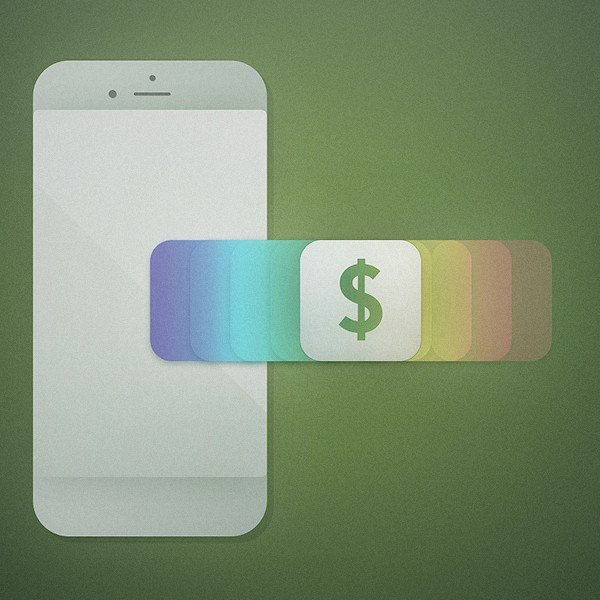
If you go with this approach, ensure that your app includes the following features:
- A fantastic listing in the App Store or Play Store
- Excellent feedback with a clear demonstration of the value
- A long list of advantages
Consumers will only find your app better than the free ones if it has all of these attributes.
| Advantages | Disadvantages |
| Downloads are linked to profits. | Users who pay for an app are likely to be somewhat critical of its features. |
| Possibility of attracting a high-quality customer base | Getting users is difficult. |
Freemium Model
Consumers can use the application’s elementary features for free, but they must pay to access specific functionalities or content. This free version business model has been adopted by nearly 94 percent of apps. It’s simple why this method of app monetization is so prevalent. The developer receives a steady income. It’s simple to foresee. It has the potential to generate significantly more earnings than other approaches in some circumstances. The subscription approach is most effective when used in conjunction with an appealing app that has clear functionality and good usability.

Spotify, for instance, is an industry leader when talking about the freemium model. Whereas most freemium apps capture 2-5 percent of users who are ready to pay and become subscribers, Spotify translates an astonishing 42 percent of free users into paying members.
| Advantages | Disadvantages |
| A consistent and dependable source of income. | To persuade consumers to part with their money, a fantastic product and a pleasant experience are required. |
| Allows apps to have a variety of income streams, such as advertising to free consumers and paid upgrades. | It usually takes more time for a company to become lucrative. |
Subscriptions
Under this approach, all users have temporary unrestricted access to the app.Users have a greater number of choices with subscription plans when compared to purchasing. The app is available in two variants: basic and premium. Numerous apps have multiple subscription levels with a combination of functionalities and cost structures to entice reluctant users to sign up for a bottom tier and then upsell them later. Just please remember that selecting a subscription approach means focusing not just on transforming users into subscribers, but also on preventing attrition among existing subscribers.
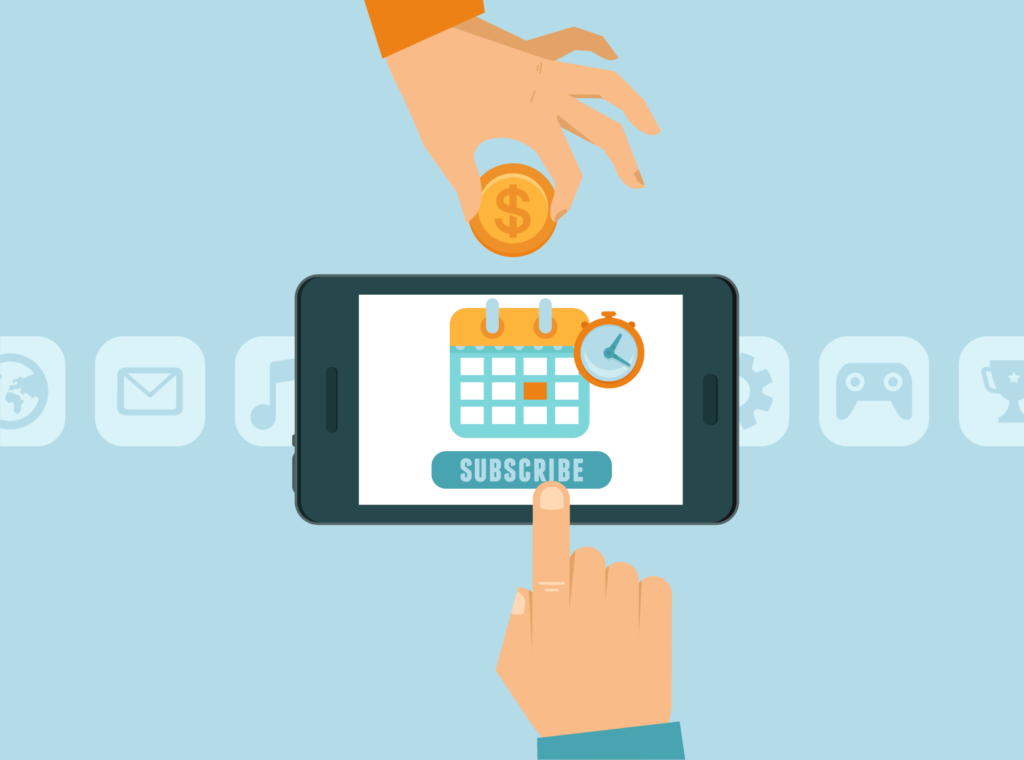
For example:
Headspace: Since 2014, the famous meditation and relaxation app has provided guided meditation on a variety of subjects, including relationships, fitness levels, efficiency, sleep, and plenty more.
| Advantages | Disadvantages |
| Getting a large number of people to download the app | It’s difficult to persuade users to subscribe. |
| Subscription fees generate repeating business. | It can be expensive to support free users. |
| Can draw in a huge number of free users and keep them hooked on the app before actually transforming them to subscribers. | It’s hard to ascertain how much content can be provided for free and which functionalities should be included in the paid version. |
Sponsorships and Partnerships
Cooperating with advertising companies might incentivize your users for completing specific in-app activities. You’ll be an attractive associate if you build a well-known application with a large number of users. Various global firms would want to reach out to your target market. Your app assists your partner in boosting sales or generating traffic after you agree to an alliance. In exchange, you will receive a portion of the profits.
| Advantages | Disadvantages |
| An efficient approach to enhance or broaden the facilities you offer users while also tapping into new markets. | Existing users may well be confused or irritated if the collaboration isn’t a good fit or well implemented. |
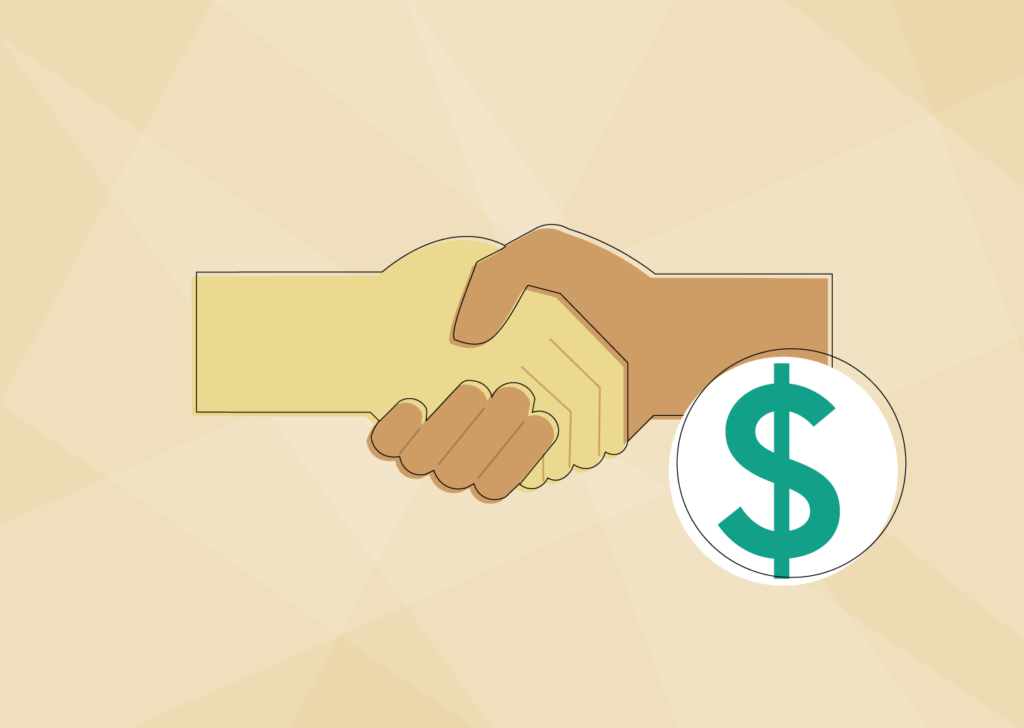
How to choose the best monetization strategy
When it comes to the best app money-making approach, there is no one-size-fits-all solution. Every team must build a clear plan that is tailored to the development’s requirements.
Furthermore, researching best market practices and learning something about your rivals’ experiences is a smart idea. It can serve as an excellent starting point, but individual goals must also be considered.
It is worth remembering that app features will always be at the heart of any money-making strategic approach for mobile apps. It is simpler to choose business strategies and execute them within your project based on intended functionalities. The proposed feature should pique the interest of your prospective audience and produce consistent income.
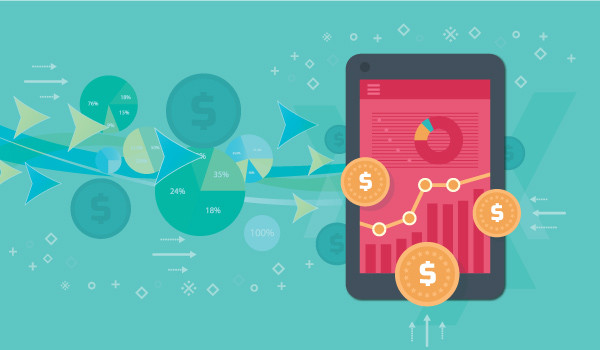
Here are a few things to think about when designing a mobile app monetization plan:
- Begin with the app: At the most fundamental level, business owners must consider what their app accomplishes. What issue is it supposed to solve? What is the solution to this issue? What service are you providing and what is your purpose behind it? As previously stated, some approaches would be better adapted to specific kinds of applications. Subscription models, for eg, are ideal for content-focused services such as music or video on demand, media and entertainment, and other applications.
- Examine Your Rivals: When it comes to developing a smartphone app, an investigation must be a primary concern. Product design and identifying potential monetization approaches necessitate a thorough examination of similar or related applications in the same niche. Specifically, how are your competitors making money? How effective are their approaches? Is there a hole in the market that could be filled? Is there anything that could be done differently to increase earnings?
- Take a look at your intended audience: who are they? What are they looking for? Most notably, what, if something, are they prepared to spend on? Users, on the whole, have to be shown real worth to make purchases. Exemplify value before acquiring pay-per-download apps; for freeware, the unique selling point must be demonstrated via the app’s experience or functionality.
Conclusion
As you’ve seen, there are a variety of ways to monetize your app. Any business, it should go without saying, should have a mobile presence. In today’s market, client relationships may be improved and customers might be more interested in your products and services. Simultaneously, mobile solutions have opened up new revenue opportunities for businesses. Finding the right one(s) is important to the success of your project. This article should have given you some useful knowledge.
Thinking of the right way to monetize an application may be extremely tiring and you may be confused about which technique to choose. But you don’t have to worry, if you face any difficulty, feel free to write to us using the feedback form, our experts would get back to you as soon as possible with the best possible solutions.

Subscribe to us










